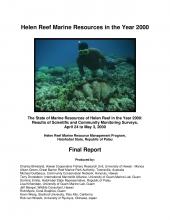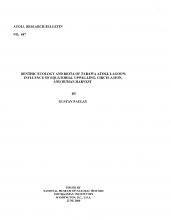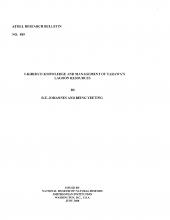The state of marine resources of Helen reef in the year 2000: results of scientific and community monitoring surveys, April 24 to May 3, 2000 : final report

Biodiversity Conservation
Available Online
Helen Reef in the Southwest Islands of Palau is the one of the greatest marine assets of the Hatohobei (Tobi) People and of the Republic of Palau. Helen Reef is known as one of the most biologically diverse coral reef atolls in the Pacific and historically one of the most biologically abundant reefs in Palau,including acclaimed populations of plentiful marine resources including, trochus, turtles, sea cucumbers, seabirds, and many large reef fish. Reflected in its traditional Hatohobeian name Hotsarihie, which signifies Reef of the Giant Clam, Helen Reef is perhaps most famous in the region for its once ubiquitous giant clams, and unfortunately the unchecked foreign poaching that has occurred there over the past decades. The richness and abundance of the atolls resources are factors of its location, being remote from human populations and bordering the biodiverse marine eco-regions of Melanesia and SE Asia. The cumulative characteristics of the atoll have attracted many users over time including subsistence fishers from Hatohobei and neighboring islands, sea-faring traders, local businesses interests, and foreign commercial resource operations. The remoteness of Helen Reef which contributes to its historical levels of resource abundance is also a underlying cause for recent resource declines, as the atoll is usually uninhabited and has been notably vulnerable to poaching for the last half century by foreign fishermen from Asian countries






